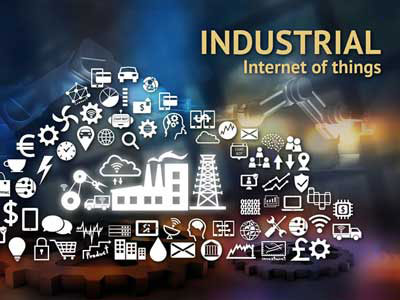Key Takeaway
IIoT stands for the Industrial Internet of Things. It involves connecting sensors, instruments, and devices over the internet to enhance industrial applications. This connectivity allows for real-time data collection, monitoring, and analysis, leading to improved efficiency and productivity. IIoT enables better decision-making and automation in industries like manufacturing, energy, and logistics. By leveraging IIoT, companies can optimize processes, reduce downtime, and gain insights into their operations.
Definition and Explanation of IIoT
The Industrial Internet of Things (IIoT) refers to the interconnected system of sensors, instruments, and devices networked together with industrial applications. This powerful concept leverages the power of big data, machine learning, and advanced analytics to drive smarter, more efficient operations. Essentially, IIoT extends the traditional Internet of Things (IoT) principles into industrial and manufacturing sectors, focusing on real-time data acquisition, machine-to-machine (M2M) communication, and automation.
By integrating IIoT, industries can achieve unprecedented levels of efficiency and productivity. Think of it as a giant network where every machine and device communicates, providing critical insights and real-time data. This connectivity allows for predictive maintenance, reducing downtime, and improving overall operational efficiency. In simpler terms, IIoT transforms traditional manufacturing processes into intelligent, data-driven ecosystems.

Historical Background and Evolution of IIoT
The concept of the Industrial Internet of Things (IIoT) has undergone significant transformation since its early days. Initially, industrial automation relied on basic control systems and rudimentary data collection methods. With the rise of the Internet and advancements in communication technologies, the stage was set for more advanced systems. The term “Industrial Internet of Things” started gaining traction around 2012, as industries began to realize the immense potential of connecting industrial devices to the internet.
From the early stages of basic automation to the current state of IIoT, this evolution has been fueled by rapid progress in sensor technology, wireless communication, and data analytics. Over the years, industries have transitioned from manual, paper-based processes to highly automated, digital systems. This shift has not only increased productivity but also paved the way for innovative solutions. Today, IIoT stands at the forefront of the Fourth Industrial Revolution, or Industry 4.0, transforming how industries operate and innovate.
You May Like to Read
Key Components of IIoT Systems
IIoT systems comprise several key components, each vital to the overall ecosystem. These include sensors and actuators, communication networks, edge devices, cloud platforms, and advanced analytics. Sensors play a crucial role by collecting data from various industrial processes, while actuators carry out commands based on the analyzed data.
Communication networks, both wired and wireless, ensure the seamless transfer of data between devices and systems. Edge devices, such as gateways and edge servers, process data locally, reducing latency and enabling real-time decision-making. Cloud platforms provide centralized data storage and advanced analytics capabilities, allowing industries to extract actionable insights from vast datasets.
Advanced analytics, driven by machine learning and artificial intelligence, convert raw data into valuable information. These insights are instrumental in predictive maintenance, quality control, and optimizing industrial processes. Together, these components form a robust IIoT ecosystem that enhances operational efficiency and fosters innovation.
Major Benefits of Implementing IIoT
Implementing the Industrial Internet of Things (IIoT) offers transformative benefits, enhancing traditional industrial operations. One of the key advantages is predictive maintenance. With IIoT, industries can monitor equipment health continuously, identifying potential issues before they lead to failures. This proactive approach minimizes downtime and significantly reduces maintenance costs, ensuring smoother operations.
Another major benefit is the enhancement of operational efficiency. IIoT systems optimize processes and resource utilization through real-time data analytics. This capability allows industries to make informed decisions quickly, boosting productivity and minimizing waste. Additionally, IIoT improves safety by monitoring hazardous conditions and enabling rapid responses to emergencies, safeguarding workers and equipment.
IIoT also offers increased flexibility and scalability. Industries can adapt IIoT systems to changing production demands effortlessly, scaling operations up or down as needed. Moreover, IIoT promotes sustainability by optimizing energy consumption and reducing the environmental impact of industrial activities. By implementing IIoT, industries can achieve smarter, more efficient, and sustainable operations, ultimately driving growth and innovation.
Future Trends in IIoT Development
The future of IIoT is bright, with several emerging trends poised to drive further innovation. One significant trend is the integration of artificial intelligence (AI) and machine learning (ML) into IIoT systems. These technologies will enhance data analytics capabilities, enabling more accurate predictions and smarter decision-making, which is critical for industrial efficiency.
Another promising trend is the advent of 5G connectivity. This advancement will significantly enhance the speed and reliability of IIoT communication networks, facilitating real-time data transfer and supporting complex, data-intensive applications. The increased bandwidth and lower latency of 5G will be a game-changer for industrial operations, enabling more sophisticated IIoT applications.
Edge computing is also gaining traction in the IIoT landscape. By processing data closer to the source, edge computing reduces latency and enhances the efficiency of IIoT systems. This trend will support real-time analytics and decision-making, crucial for dynamic industrial environments.
Cybersecurity will remain a critical focus as IIoT adoption grows. With more devices interconnected, protecting industrial networks from cyber threats is paramount. Industries will invest heavily in advanced security measures to safeguard sensitive data and ensure the integrity of IIoT systems, maintaining trust and reliability in these advanced technologies.
Conclusion
Understanding the full scope of IIoT is crucial for leveraging its benefits in industrial applications. IIoT has revolutionized the way industries operate, driving efficiency, productivity, and innovation. By integrating advanced technologies, industries can optimize processes, enhance safety, and achieve sustainability goals. As IIoT continues to evolve, staying abreast of emerging trends will be essential for maintaining a competitive edge in the ever-changing industrial landscape.
